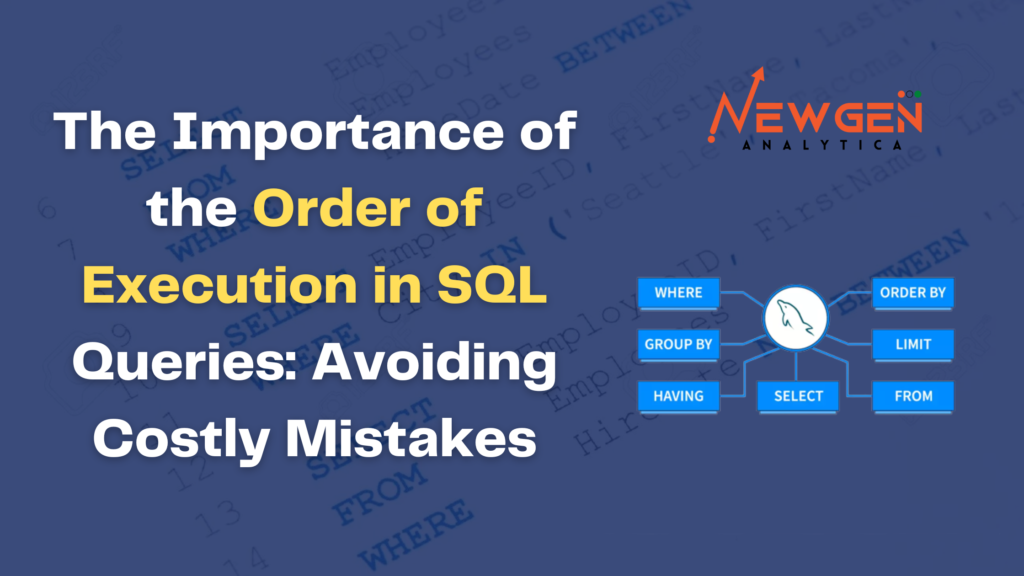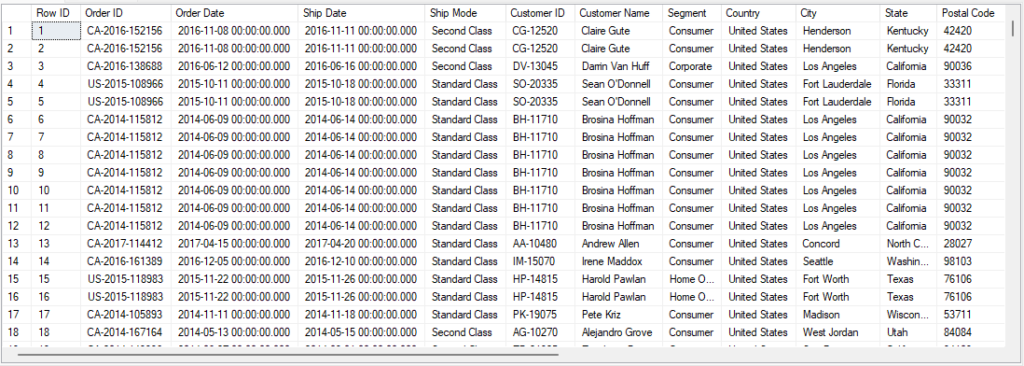
The Importance of the Order of Execution in SQL Queries: Avoiding Costly Mistakes
When writing SQL queries, it’s important to understand the order in which the various clauses are executed. This is known as the order of execution, and it can have a significant impact on the performance and results of your queries. In this blog post, we’ll explore the typical order of execution for a SELECT statement in SQL.
Order of execution
This are the points in sequence for Order of Execution in SQL.

FROM clause: The FROM clause specifies the table or tables that the query will retrieve data from. This clause is executed first, and it identifies the underlying data source for the query.
JOIN clause: If there are any JOIN clauses in the query, they are executed after the FROM clause. Joining tables is a way to combine data from multiple tables, and it can be an expensive operation if the tables are large or if there are many joins. Joining tables should be done only when necessary.
WHERE clause: The WHERE clause is executed after the JOIN clause, and it is used to filter rows based on specified conditions. This is an important clause because it can significantly reduce the amount of data that needs to be processed by subsequent clauses.
GROUP BY clause: If there is a GROUP BY clause in the query, it is executed after the WHERE clause. The GROUP BY clause is used to group the data into sets based on the specified columns. This is typically used with aggregate functions such as SUM, AVG, COUNT, MAX, and MIN.
HAVING clause: The HAVING clause is executed after the GROUP BY clause, and it is used to filter groups based on specified conditions. This clause is similar to the WHERE clause, but it operates on groups instead of individual rows.
SELECT clause: The SELECT clause is executed after all of the previous clauses, and it selects the columns to be returned in the query result. This is where you specify the data that you want to retrieve from the query.
ORDER BY clause: Finally, if there is an ORDER BY clause in the query, it is executed last. The ORDER BY clause is used to sort the query result based on the specified columns and sort order.
Optimizing Order of Execution
Although the typical order of execution listed above is a good guideline for understanding how a SQL query is processed, it’s important to note that some database management systems may optimize the order of execution based on the specific query and data being accessed.
For example, some database management systems may push some of the filter conditions from the WHERE clause into the JOIN clause to reduce the amount of data that needs to be processed. Other systems may execute the SELECT clause before the GROUP BY clause to optimize the use of indexes.
To optimize the order of execution for a specific query, you can use the EXPLAIN command in SQL to see the execution plan for the query. The execution plan shows how the database management system will execute the query, and it can help you identify any potential performance issues.
Practical Example
Let us work with the Super Store Dataset and use the Orders worksheet. The dataset will look something like this.

Dataset will have around 9,994 records altogether.
Now let’s consider this SQL Query
SELECT Category, SUM(Sales) AS [Total Sales]
FROM Orders
WHERE year([Order Date]) = 2016
GROUP BY Category
HAVING SUM(Sales) > 10000
ORDER BY SUM(Sales) DESC;In the above query we have all the components of Order of Execution leaving Joins which we will observe in our later content.
According to above query –
FROM Clause will be executed first from all the commands as it will reterive the data from the dataset. Followed by this we have a WHERE clause condition where SQL has to observe the data where the order data is in the year 2016. Once WHERE clause is executed next it will go to GROUP BY clause where it will group all the categories based on the WHERE condition.
After successful execution of GROUP BY, next clause will be HAVING clause which is used with the aggregating data, hence it will be used to apply condition to the aggregation SUM(Sales). After this it will reterive all the records which SQL has searched through the order of execution.
So next command which will be executed is SELECT clause. Atlast if we want to arrange the data in a particular order, we can use ORDER BY clause with either ascending order or the descending order.
After execution of the above query the output which we will get is shown below,

Conclusion
In conclusion, understanding the order of execution in SQL is important for optimizing the performance and results of your queries. By following the typical order of execution and optimizing it as needed, you can ensure that your queries are efficient and effective in retrieving the data you need.
We will meet with more such content in our future blogs. Till then stay tuned.
Happy Learning !!